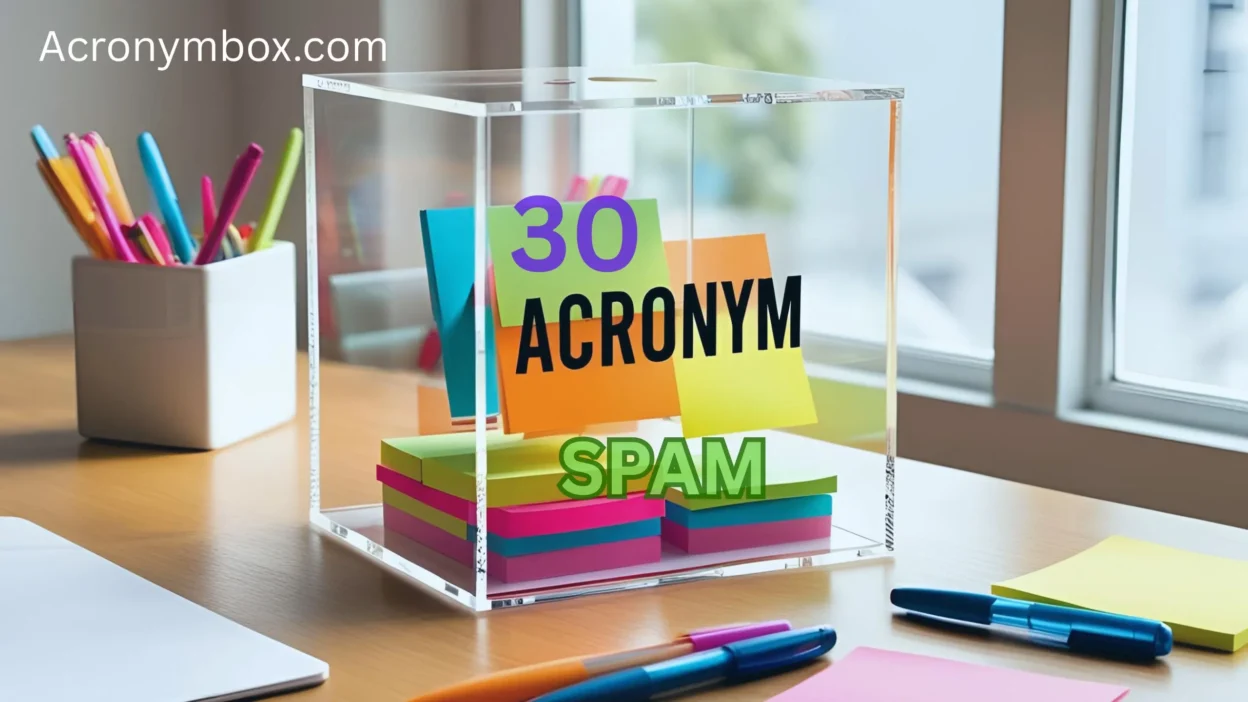When you hear the word “SPAM,” what do you think of first? Probably one of two things:
- A mysterious canned meat product.
- Those annoying emails clogging your inbox.
But what if we told you that SPAM is also thought of as an acronym—one that’s evolved and taken on multiple meanings over the years, depending on context? In fact, the word “SPAM” has developed a reputation far beyond its food origins.
In this post, we’ll dive into the different interpretations of “SPAM acronym,” explore 30 creative and context-based alternatives, and guide you on when and how to use each one. Whether you’re dealing with digital clutter, repetitive messaging, or unwanted noise, there’s a more specific word or phrase that may better suit your tone.
🥫 What Does “SPAM” Really Stand For?
Officially, SPAM (the meat product) was introduced in 1937 by Hormel and stands for “Spiced Ham.” However, in modern digital culture, the word has taken on a very different tone—usually referring to unsolicited or irrelevant messages, especially in emails, texts, or social media.
In internet slang, SPAM is often interpreted as:
- Stupid Pointless Annoying Messages
- Sending People Annoying Mail
- Saturation Point Advertising Messaging
Regardless of which version you use, the idea is the same: excessive, repetitive, and usually unwelcome content.
💡 30 Alternatives to “SPAM” (With Use Cases and Example Sentences)
Below are 30 words and phrases that reflect various shades of “SPAM,” from harmless repetition to deliberate disruption. Each one comes with a use case and sample sentence to help you understand its tone and context.
1. Junk Mail
Unwanted promotional messages, usually in email.
“My inbox is full of junk mail from brands I’ve never heard of.”
2. Unsolicited Messages
Any message sent without permission.
“We don’t allow unsolicited messages in this forum.”
3. Mass Messaging
A single message sent to a large audience.
“He used mass messaging to advertise his workshop.”
4. Phishing
A form of spam with malicious intent (to steal data).
“That email was a phishing attempt—don’t click the link.”
5. Scam Mail
Fraudulent messages disguised as real.
“Be careful—that job offer is just scam mail.”
6. Bot Posts
Automated posts, often on social media or forums.
“The comments section is flooded with bot posts.”
7. Clickbait
Misleading or exaggerated headlines to gain clicks.
“I’m tired of clickbait articles cluttering my feed.”
8. Spammy Content
Content that feels low-quality and repetitive.
“That blog is full of spammy content just for SEO.”
9. Noise
Digital clutter or irrelevant info.
“There’s so much noise on this platform lately.”
10. Ad Overload
Excessive or disruptive advertising.
“The website was unreadable due to ad overload.”
11. Mail Bombing
Flooding someone’s inbox with messages.
“They were victims of mail bombing after the breach.”
12. Robocalls
Automated, spam-like phone calls.
“I get robocalls at least three times a day.”
13. Cold Emails
Unrequested marketing emails.
“Cold emails are a common B2B strategy—but they can feel like spam.”
14. Pop-ups
Unwanted browser ads.
“He installed a blocker to avoid constant pop-ups.”
15. Repetitive Ads
The same ad shown too frequently.
“I’ve seen that ad 10 times today—definitely spam.”
16. Autoposting
Unmonitored, repetitive automated posts.
“The account was banned for autoposting irrelevant content.”
17. Content Farming
Low-quality articles made purely for traffic.
“That site is just a content farm—it’s full of spam.”
18. Spoofing
Faking a trusted identity to send spam.
“The email was spoofed to look like it came from PayPal.”
19. Bait and Switch
Misleading message with a hidden motive.
“Their newsletter is a bait and switch—just ad spam.”
20. Pushy Promotions
Over-aggressive marketing tactics.
“Pushy promotions can make even good brands look spammy.”
21. Chain Messages
Messages that ask to be forwarded endlessly.
“Don’t fall for chain messages—they’re classic spam.”
22. Fake Giveaways
Scams disguised as free offers.
“Most fake giveaways are just spam to collect your data.”
23. Forum Flooding
Posting excessive content to disrupt a forum.
“He was banned for flooding the forum with spam.”
24. Ad Spamming
Posting the same ad multiple times.
“Stop ad spamming—we’ve already seen your promo.”
25. Email Spoofing
Faking sender identity in spam messages.
“The spam looked like it came from a friend, but it was spoofed.”
26. Unfiltered Mail
Mail not screened for spam.
“Always use a filter to catch unfiltered mail.”
27. Comment Spam
Unwanted ads in comment sections.
“Her blog receives a lot of comment spam.”
28. SMS Spam
Spam messages sent via text.
“He blocked the number after repeated SMS spam.”
29. Telemarketing Spam
Aggressive or unrequested sales calls.
“I signed up for something and now I get telemarketing spam.”
30. Bulk Emailing
Large volume of marketing emails.
“They rely heavily on bulk emailing, which can turn off customers.”
🧠 How to Choose the Right Alternative
Different forms of “SPAM” call for different synonyms. Here’s how to pick one based on tone and situation:
- Professional setting? Use: unsolicited messages, bulk emailing, or cold emails
- Scam or danger involved? Use: phishing, spoofing, or scam mail
- Tech-focused discussions? Use: bot posts, mail bombing, or content farming
- Casual conversation? Use: junk mail, clickbait, or pop-ups
Also, consider emotional tone:
- If you’re annoyed: spammy, repetitive ads, pushy promotions
- If you’re being cautious: phishing, spoofing, bait and switch
✅ Conclusion
The word “SPAM” is convenient, but often too vague. By exploring alternatives, you can sharpen your message, set the right tone, and better describe the kind of digital noise you’re dealing with.
Whether you’re a writer, marketer, or everyday user just trying to clean up your inbox, these 30 alternatives will help you communicate more clearly and effectively.
Next time you reach for “SPAM,” ask yourself—what kind? Then choose a synonym that fits.




